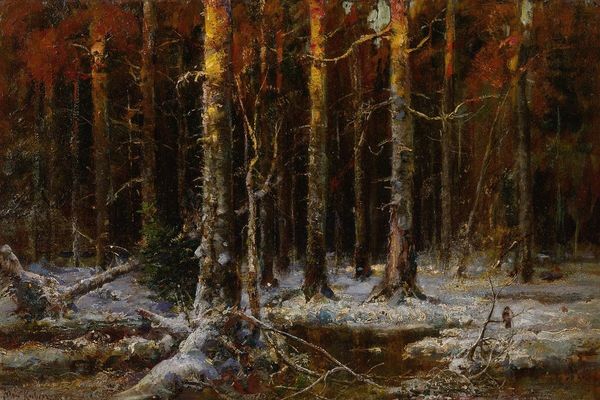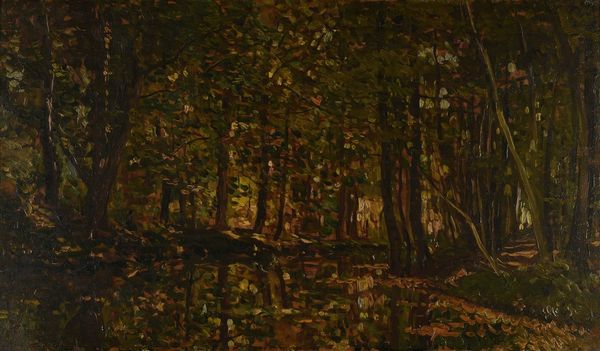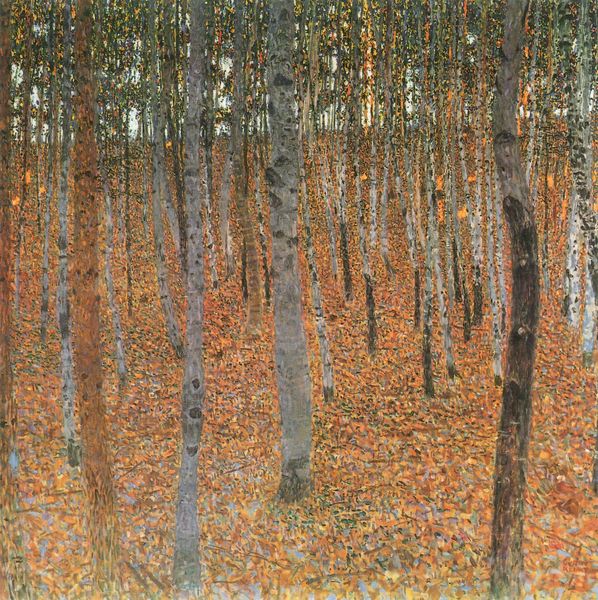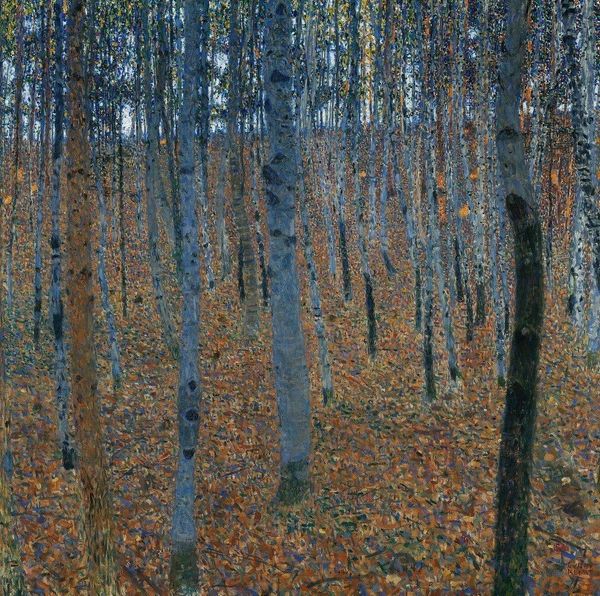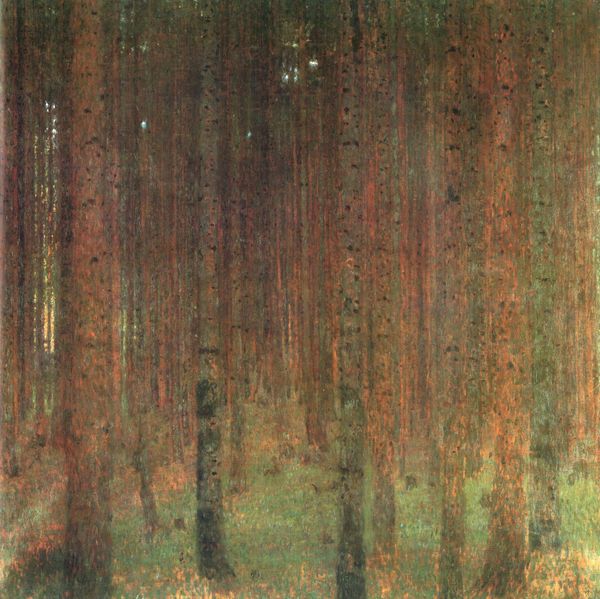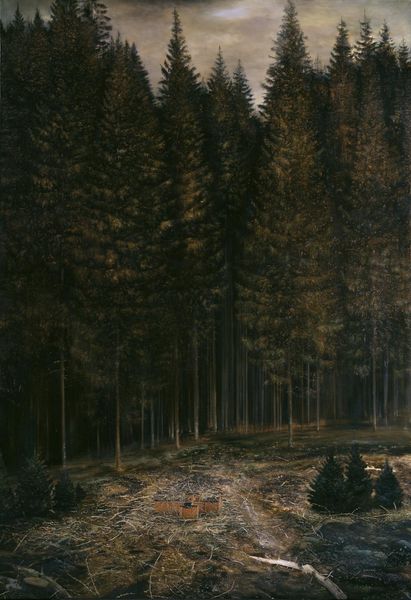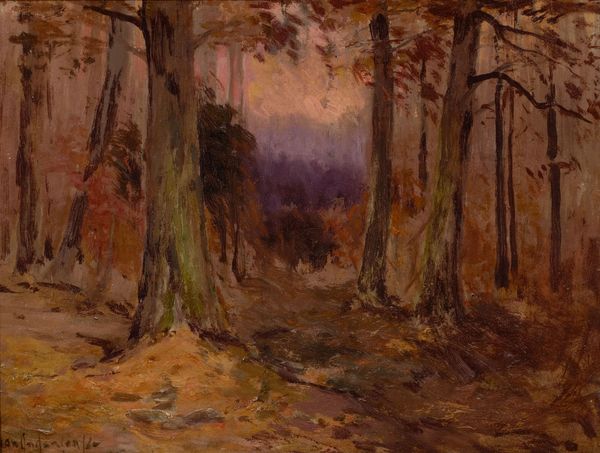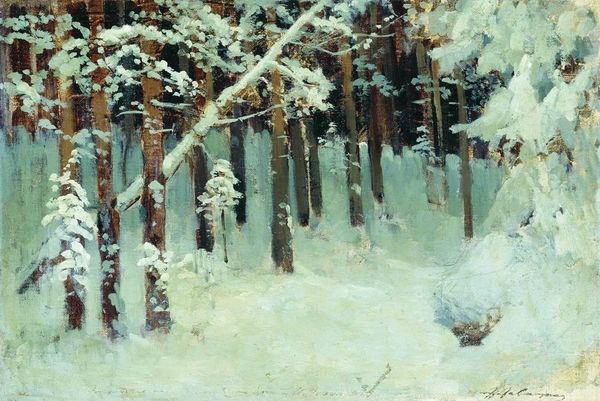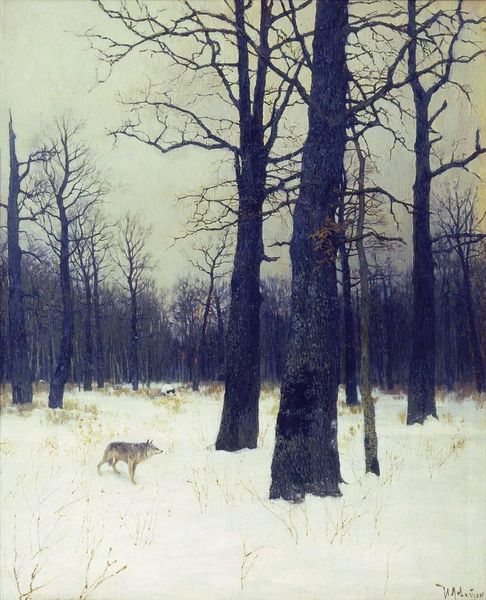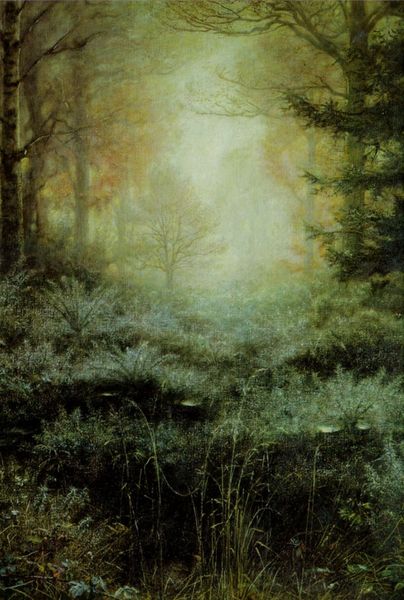
Dimensions: height 129.5 cm, width 179 cm, thickness 3.4 cm, depth 9.5 cm
Copyright: Rijks Museum: Open Domain
Curator: Before us is "Mystieke paden': bosgezicht," which translates to "Mystical Paths: Forest View," a 1907 oil painting by Gust van de Wall Perné, housed here at the Rijksmuseum. Editor: It immediately evokes a sense of isolation. The monochromatic palette, the way the mist obscures the depths of the woods, makes me feel quite uneasy, like I'm trespassing somewhere I shouldn't be. Curator: Notice how Perné employs Impressionistic brushstrokes, but also blends that with Symbolist themes, using the forest not just as a landscape, but as a mirror for inner experience, for the subconscious. Forests are powerful symbols across cultures. What do you think he might be trying to convey? Editor: That's interesting to consider within the context of its time. Early 20th century Europe saw rising anxieties around industrialization and urbanization, so the forest, as a motif, may represent a yearning for something untouched, authentic, even a critique of encroaching modernity. Perhaps these ‘mystical paths’ signify a retreat from societal constraints? Curator: I agree that a certain romanticizing of nature plays a role here. However, forests, and the darkness they inherently imply, also stand for danger, for trials, even initiations. They are thresholds. Notice that very faint impression of deer in the distance, are those the ghosts of the past, beckoning us deeper in, deeper into this dreamlike realm of half perceived reality? Editor: Or are the deer stand-ins for some oppressed group or minority hidden in the woods? After all, history has always excluded certain populations and identities from its primary narratives. Perhaps it is Perné alluding to histories deliberately obscured and nearly erased from public view. Curator: Perhaps Perné wanted the viewers to supply that answer, or find their own answers within their own belief system and emotional knowledge of art and history. This painting asks more questions than it answers, I think. Editor: Indeed. This work truly illustrates how artistic expression can serve as both a reflection of societal concerns and as an opening for multiple interpretations about collective historical experiences.
Comments
No comments
Be the first to comment and join the conversation on the ultimate creative platform.
